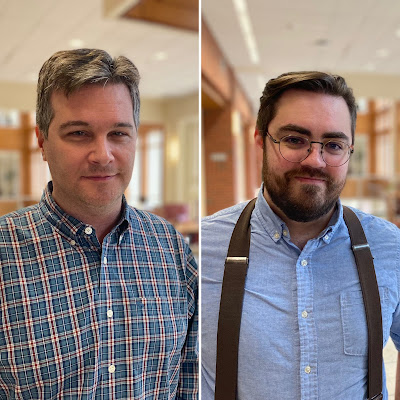School of Dreams Academy Robotics Team Named International Rookie of the Year

Written by Deborah Fox/News-Bulletin
Photo courtesy of Rita Garcia
July 23, 2011
School of Dreams Academy's state Botball champions competed in the 2011 International Botball tournament and Global Conference on Educational Robotics July 12 in Garden Grove, Calif.
Photo courtesy of Rita Garcia: The School of Dreams Academy state champion Botball team visits the Jet Propulsion Laboratory at the California Institute of Technology during their stay in California for the 2011 International Botball Tournament. Pictured, from left, are Danielle Garcia, Chloe Grubb and Abel Romero, who are checking themselves out on the video screen of an infrared heat-sensing camera.
They won the judge's Rookie of the Year award. Not bad when you consider the competitors they were up against.
In the students' first year in Botball, they took the state by surprise when they won overall first place in Las Cruces in April. Now they are recognized as Rookie of the Year internationally.
"There were over 500 kids and maybe 60 teams from all over the place," said Eric Brown, the robotics coach and life sciences teacher. "The east coast, to the west coast, to Hawaii; there was a team from Poland, and Austria, from all over the place. It was a great competition."
The SODA students were able to study robots that were 10 and 15 years in the making, upping their ante.
"They saw that it was a different level," Brown said. "They were really impressed."
Botball robots are unique in that they are autonomous robots. They are not remotely controlled as in the BEST (Boosting Engineering, Science and Technology) robotics competitions, but are programmed by students to perform a task on their own.
Botball teaches real-life programming and software development as well as valuable teamwork skills, project documentation, and working on a schedule.
It is the brainchild of KISS (Keep It Simple, Stupid) Institute, a nonprofit educational organization in Norman, Okla. that uses hands-on robotics programs to communicate the knowledge and practical understanding of science, technology, engineering, and math, or STEM, as it's known to educators.
"They didn't place as far as the top teams or the finalists in the competition, but they were voted by the KIPR (KISS Institute for Practical Robotics) as the rookie team of the year," Brown said. "They scored very high on their oral presentations, all their preliminary work — the work that they had to submit before the competition — to their design. They did really good, and I'm very proud of them."
The students were impressed by the robots of the competing teams, and learned a lot in an atmosphere of camaraderie, Brown said.
"They met some good people there that helped them out with some programming," he said. "They had a good time."
During the trip the students visited the Jet Propulsion Laboratory at the California Institute of Technology in Pasadena. It's the leading U.S. center for robotic exploration, where they design and build the land rovers for NASA, and Mars exploration, and our weather satellites, said Kerra Howe, a parent who went along on the trip to chaperone.
"We got a behind-the-scenes tour," said Brown. "We got to see the prototype of the rover that's going to land on Mars. The kids asked some awesome, awesome questions. I was really impressed with their questions."
"We have a group of students who were focused on a career in engineering and sciences before visiting JPL," said Howe. "Now they're very interested in finding more information to go after careers in those fields."
One student, Denton Shaver, has an uncle who is an engineer at JPL. He arranged a special tour of the facility for the students.
"It was more personal as far as the one-on-one with the students," Howe said. "They got to go to different areas on the campus that haven't been visited by other schools. They got to see the 'Curiosity Rover,' the next Mars rover that will be launched in November."
Students saw movies about previous missions to Mars, and enjoyed interactive exhibits on the solar system and Earth sciences.
In the 3D simulation building, students were treated to virtual science.
"You had to wear 3D glasses to see the movie simulation of Earth processes," Rita Garcia, another parent, said. "It definitely captured their interest."
They also viewed a satellite launch control room.
"The students went to seminars and got to hear from college professors about robotics," said Howe. "How it helps our society in everything from elderly care to people with disabilities."
"They were able to see how the basics learned in Botball apply to real-life robotics," said Garcia. "And they got a sneak peek of the new equipment for upcoming competitions."
Scoring of the competition is based on a point system. The winning robot was from a team in Hawaii that averaged 500 points a round.
SODA's scores were considerably lower, but were encouraging to the team's coach.
"We're almost there to that level, and this is our first year, so we're looking forward to next year and being able to compete," said Brown.
Some of the sponsors of the competition included NASA, the Office of Naval Research, Northrop Grumman Foundation, iRobot, Solid Works, Cisco, University of Oklahoma College of Engineering.
For information about Botball, visit www.botball.org.


